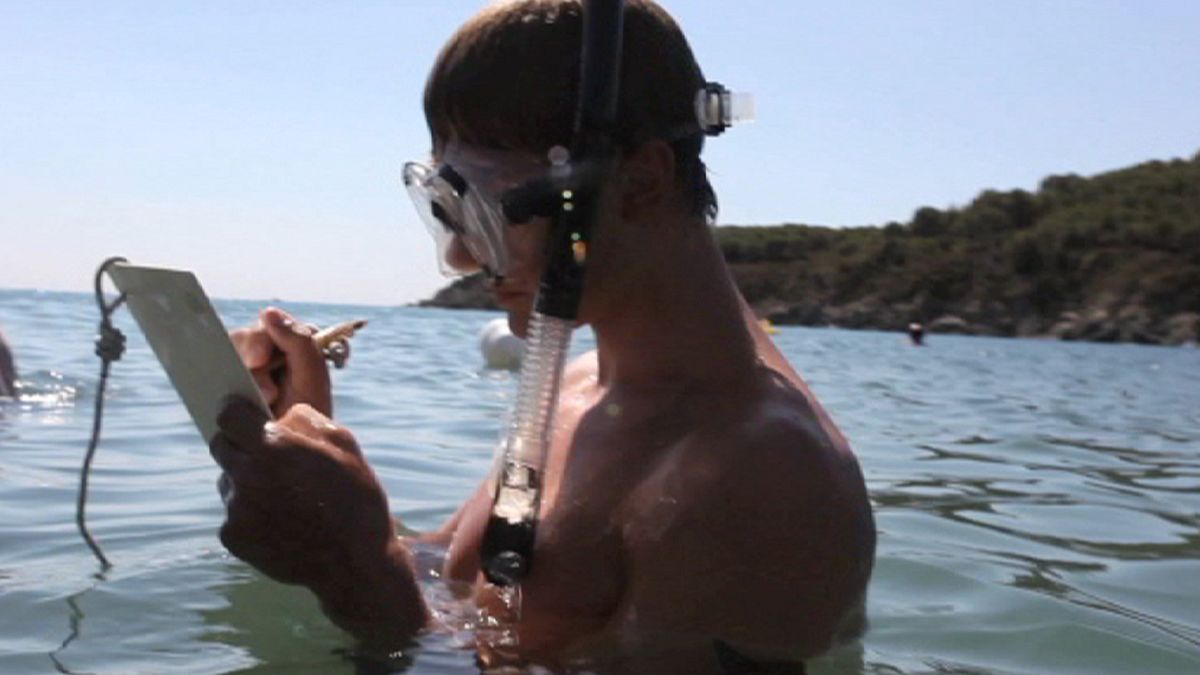Teaching people about the elements isn’t necessarily obvious but is vital in order that humans can make the best use of nature’s gifts.
Powerful and Invisible
Near Santiago in Chili, at the Adolfo Ibañéz University, industrial and civil engineering students are designing an eco-friendly balloon. It all starts with waste bags.
Michelle Finot, one of the students, explained: “We want to use the fact that air is essentially a fluid. It exists, and it makes the balloon fly rather than staying on the ground. What this exercise does is make us put into practice the theoretical knowledge that we’ve learned at university like Archimedes’ principles, and our knowledge of pressure. The idea is to make a balloon that can fly and carry 5 kilos.”
To be counted as successful the balloon has to travel 10 metres in the air. Having a sound knowledge of thermodynamics is essential. And of course, all the balloons have to be eco-friendly.
Gustavo Cáceres, the tutor, said: “Generally the more expensive the materials are, the more carbon dioxide they emit. But it’s hard for the students to calculate the cost of materials. But they can calculate operating costs and carbon emissions while the balloon is in the air.”
Recycled kite surfing materials, recycled bin bags, all sorts of things can be used. Using a hair drier to inflate the balloons makes things quicker, but using methane gas is more eco-friendly. And in the end, some balloons fly and some of them don’t.
Omar Matus, another student, described the experiment: “Sellotape and bin bags deteriorate as the temperature rises inside the balloon. AIr pressure is very strong, although becasue we live with it, we don’t notice it. But the force is incredible. The fact that the balloon rose proves that we built it correctly.”
All of which means that although flying balloons might look like hot air, it’s a great way to train tomorrow’s environmentally friendly engineers.
Beautiful and Dangerous
The New York Fire Department is known all over the world for their fire fighting efforts. But a large part of their work is in fact fire prevention. And raising awareness through their Fire Safety Programmes.
Lieutenant Macuso, said: “Education is basically how to be safe in fires, we always talk about the three “Ps”: prevent, practice and prepare. So we try to prevent a fire, prepare for it and we always practice our plan.”
The Schools Programme runs all year round. Every week, 45 fire safety educators go into around 15 schools all over the city to give lectures and run safety training programmes. It’s a free service and the lectures take place in classrooms rather than lecture halls so that all the children get a chance to ask questions.
Children as young as 5 years old learn life saving techniques, such as smoke alarm maintenance, safe cooking practices, home fire escape and the “don’t touch” rule for matches and lighters. So hopefully, less fires will break out and if they do, even children will know what to do to stay safe.
Elizabeth Cano, their teacher said: “I really think it should be mandatory, because that way children not only should be able to benefit today but the entire school will benefit and if they do it in a regular basis is something that is going to be in their minds all the time not just today or tomorrow.”
After all, it’s never to soon to prepare for all eventualities.
The Blue Continent
The Hydra Institute in Italy teaches marine biology, trains the researchers of tomorrow to explore the mysteries of the deep.
Christian Lott, the director of the Hydra Institute, said: “The Hydra Institute of science was founded almost 20 years ago here on Island of Elba, in Italy, to have the access to the pristine waters of Mediterranean and to give a chance to students from all over the world to learn under water and in the class room, here, on this Island.”
It means that marine biology students studying at institutes far from the sea can get practical experience, and see living creatures and habitats they’ve only seen on a screen before.
Dr Miriam Weber, the head of Marine Science Research at the Hydra Institute, said: “We have had about 12-15 thousand students come to our research field station and some of them have had their first experience with marine science here, and then they return, 15 years later as professors with their own students.”
Stephan Wietkamp, a student, said: “I’m from Germany from the University of Bayreuth and I’m studying biology. I finished my bachelor thesis now. At university I study the terrestrial ecosystem but I also wanted to have an overview of the connection to a marine ecosystem, and I think it is something for the future.”
Professor Bodo Laube, of the University of Darmstadt, said: “The biggest advantage of being here on the Island of Elba, is having direct contact with the natural environment. And this a great opportunity which we do not have in Darmstad. The second aspect for our students is that while they are here they will become teachers. And it is also essential to have access not only to this class room but also to the real marine environment and to study marine biology in the field.”
One of the most important environmental challenges in the world is the conservation of the marine habitat, which is seriously threatened by pollution. Researching new biodegradable plastics is therefore an obvious step forward.
